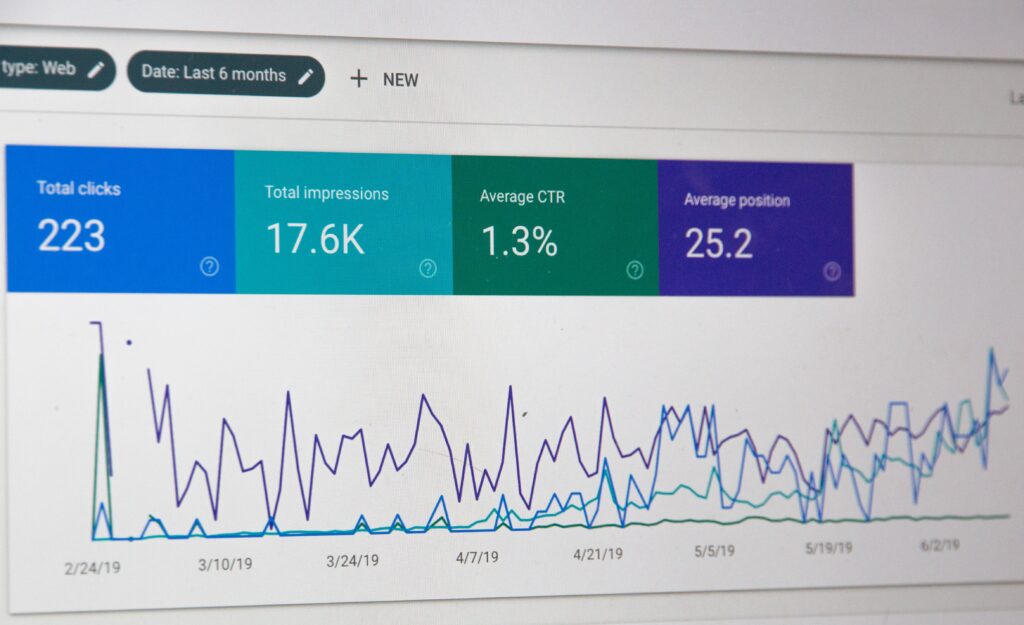Why Website Optimisation is Important
Are you running a small business and wanting to reach more customers? Have you been thinking about creating an online presence for your business, but are not sure where to start? Website optimisation is a critical part of online success. It can be the difference between attracting customers or falling behind your competition. In this blog post, we will discuss why website optimisation is important for small businesses, explain how it works and provide tips on putting these principles into practice. Read on if you’re ready to learn how to make your website work better for your business!
What is website optimisation and why is it important
Website optimisation involves making improvements to a website in order to enhance its visibility and functionality. It involves various techniques such as optimising the loading speed, improving the user experience, and making the site more search engine friendly. Website optimisation is important because it can greatly increase the number of visitors to a website and ultimately boost sales. A website that is easy to navigate, loads quickly, and offers relevant content is more likely to keep visitors engaged, encouraging them to explore the site further and even make a purchase. In a world where online competition is high, website optimisation is crucial for businesses to succeed and stand out. By investing in website optimisation, businesses can ensure that their website is working at an optimal level, attracting new customers and retaining existing ones.
How to improve your website’s visibility on search engines
Are you struggling to get your website seen by potential customers? Improving your website’s visibility on search engines is crucial in today’s digital age. The first step is to make sure your website is optimised for search engines, including using relevant keywords and meta tags. Regularly creating high-quality content on your site can also boost your search engine rankings. Another important factor is link building, both internally within your site and externally through backlinks from reputable sources. Don’t forget about the importance of social media presence and active engagement—this can also drive traffic to your site and improve visibility. By following these steps, you can increase your website’s visibility and attract more traffic to help grow your business.

Techniques to speed up your website load time
In today’s fast-paced digital world, having a fast-loading website can make all the difference. Slow page load times can lead to frustrated users, decreased traffic, and even lower search engine rankings. Luckily, with the right techniques and tools, speeding up your website can be a manageable task. One effective technique is implementing caching, which stores frequently accessed website data for quick access. Another solution is compressing your website’s files and images, making them smaller and easier to load. Additionally, minimising HTTP requests and optimising your website’s code can also greatly improve load times. By utilising these methods and staying up-to-date on the latest best practices, you can ensure that your website provides a fast and seamless user experience.

Making sure your content is easy to read and navigate
When it comes to creating content, it’s not just about what you say, but how you say it. Ensuring your content is easy to read and navigate is essential to keeping your audience engaged. Poorly written or formatted content can quickly turn readers away. Start by breaking your text up into short paragraphs and using subheadings to organise your ideas. Use bullet points or numbered lists to highlight important information. And be sure to use plain language that is easy to understand. By following these simple tips, you can make sure that your content is a pleasure to read and navigate for all of your readers.
Optimising for mobile devices for improved user experience
In today’s digital age, more and more people are accessing websites and applications through their mobile devices. As a result, it is crucial for businesses to optimise their online presence for mobile devices to provide an improved user experience. Optimising for mobile devices means ensuring that websites and applications are easy to navigate on smaller screens and touch-friendly. This involves making sure that pages load quickly, buttons and links are easily clickable, and content is easy to read without having to zoom in or scroll horizontally. By optimising for mobile devices, businesses can increase engagement and conversions, ultimately leading to greater success.
Tips for getting the most out of Google Analytics
Google Analytics can be a powerful tool for tracking website traffic and gaining valuable insights into your audience’s behaviour. To make the most of this service, it’s essential to start by setting specific goals and defining key metrics that will measure your progress towards those objectives. Regularly reviewing the data generated by Analytics can also help identify patterns and trends that can inform adjustments to your digital marketing strategy. Additionally, it’s worth exploring the platform’s advanced features, such as custom reports and dashboards, to unlock more detailed and personalised analysis. By following these tips, you can effectively leverage Google Analytics to optimise your website’s performance and drive business growth.
Website optimisation is an essential technique that every website needs to employ in order to stay competitive and reach as many potential customers as possible. By making sure your content is relevant, readable, and responsive, you can ensure that your website performs well for users across all platforms. Additionally, by taking advantage of helpful resources like Google Analytics and SEO research tools, you can further improve your website optimisation.
Utilising these strategies and techniques can put your business’s message on the map and increase your visibility on search engines significantly. This type of optimised approach to website design and maintenance ensures that you remain accessible across all devices no matter what time or place your customer chooses to access it from. In short, a well-optimised website means better connections with your audiences and more success for businesses overall—bottom line!